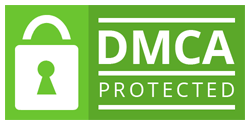
In today’s digital age, businesses face a daunting challenge: standing out in a crowded online marketplace. With millions of websites vying for attention, how can you ensure your brand doesn’t get lost in the noise? Enter Digital Marketing Services – the secret weapon for businesses looking to thrive in the online world.
Imagine having a toolkit that could skyrocket your online visibility, attract your ideal customers, and boost your revenue – all while you focus on what you do best. That’s the power of digital marketing services. From search engine optimization to social media marketing, these strategies can transform your online presence and give you the edge you need to succeed. But with so many options available, where do you start?
In this comprehensive guide, we’ll dive deep into the world of digital marketing services. We’ll explore everything from SEO and PPC advertising to content marketing and email campaigns, helping you understand how each piece fits into your digital marketing puzzle. So, whether you’re a small business owner looking to dip your toes into digital marketing or a marketing professional seeking to expand your knowledge, buckle up – we’re about to embark on an exciting journey through the digital marketing landscape!
Understanding Digital Marketing Services
A. Definition and importance
Digital marketing services encompass a range of online strategies and techniques used to promote businesses, products, or services in the digital realm. These services are crucial in today’s interconnected world, where consumers increasingly rely on the Internet for information, entertainment, and shopping. By leveraging various digital channels, businesses can reach their target audience more effectively and efficiently than ever before.
B. Benefits for businesses
Digital marketing offers numerous advantages for businesses of all sizes:
- Increased reach and visibility
- Cost-effective compared to traditional marketing
- Measurable results and data-driven decision making
- Improved targeting and personalization
- Enhanced customer engagement and interaction
| Benefit | Description |
| Increased reach | Access to a global audience through online platforms |
| Cost-effective | Lower costs compared to traditional advertising methods |
| Measurable results | Ability to track and analyze campaign performance in real-time |
| Improved targeting | Precise audience segmentation for more relevant marketing |
| Enhanced engagement | Direct interaction with customers through social media and other channels |
C. Key components of digital marketing
Digital marketing encompasses various strategies and tactics, including:
- Search Engine Optimization (SEO)
- Pay-Per-Click (PPC) Advertising
- Social Media Marketing
- Content Marketing
- Email Marketing
- Analytics and Reporting
Each of these components plays a vital role in creating a comprehensive digital marketing strategy. By understanding and utilizing these key elements, businesses can create a strong online presence and effectively reach their target audience. In the following sections, we’ll delve deeper into each of these components to provide a thorough understanding of digital marketing services.
Search Engine Optimization (SEO)

Search Engine Optimization (SEO) is a cornerstone of digital marketing, focusing on improving a website’s visibility in search engine results. By implementing effective SEO strategies, businesses can attract more organic traffic and increase their online presence.
Measuring SEO Success
To gauge the effectiveness of your SEO efforts, it’s crucial to track key performance indicators (KPIs). Here are some essential metrics to monitor:
- Organic traffic
- Keyword rankings
- Conversion rates
- Bounce rate
- Page load speed
| Metric | Description | Importance |
| Organic traffic | Number of visitors from search engines | High |
| Keyword rankings | Position in search results for target keywords | High |
| Conversion rates | Percentage of visitors taking desired actions | Medium |
| Bounce rate | Percentage of visitors leaving after viewing one page | Medium |
| Page load speed | Time it takes for a page to load completely | Medium |
Local SEO for Small Businesses
Local SEO is particularly important for small businesses targeting specific geographic areas. Some effective local SEO strategies include:
- Optimizing Google My Business listing
- Encouraging customer reviews
- Creating location-specific content
- Building local backlinks
- Ensuring consistent NAP (Name, Address, Phone) information across online directories
Off-page SEO Strategies
Off-page SEO involves improving your website’s authority and credibility through external factors. Key off-page SEO techniques include:
- Building high-quality backlinks
- Social media engagement
- Guest blogging
- Influencer outreach
- Online reputation management
On-page Optimization Techniques
On-page SEO focuses on optimizing individual web pages to rank higher in search results. Essential on-page optimization techniques include:
- Optimizing title tags and meta descriptions
- Using header tags (H1, H2, H3) effectively
- Creating high-quality, relevant content
- Optimizing images with alt tags
- Improving internal linking structure
By implementing these SEO strategies, businesses can significantly improve their online visibility and attract more qualified leads.
Pay-Per-Click (PPC) Advertising

Now that we’ve covered the basics of SEO, let’s dive into another powerful digital marketing tool: Pay-Per-Click (PPC) advertising. PPC is a model where advertisers pay a fee each time their ad is clicked, essentially buying visits to their site rather than earning them organically.
Budget Management and ROI Tracking
Effective budget management is crucial for successful PPC campaigns. Here’s a breakdown of key considerations:
- Set clear goals and allocate budget accordingly
- Monitor daily spend and adjust bids in real-time
- Use conversion tracking to measure ROI
- Regularly analyze performance and optimize campaigns
Ad Copywriting Best Practices
Creating compelling ad copy is essential for attracting clicks. Consider these best practices:
- Use strong, action-oriented headlines
- Include relevant keywords in the ad text
- Highlight unique selling points or promotions
- Create a sense of urgency with time-limited offers
- Include a clear call-to-action (CTA)
Keyword Research and Targeting
Proper keyword research and targeting can make or break a PPC campaign. Here’s a table comparing different keyword match types:
| Match Type | Symbol | Example | Triggers Ad For |
| Broad Match | None | women’s hats | women’s caps, buy ladies hats |
| Phrase Match | “…” | “women’s hats” | buy women’s hats, women’s hats on sale |
| Exact Match | […] | [women’s hats] | women’s hats |
Google Ads and Other Platforms
While Google Ads dominates the PPC landscape, other platforms offer unique opportunities:
- Bing Ads: Lower competition, potentially lower costs
- Facebook Ads: Highly targeted demographic and interest-based advertising
- LinkedIn Ads: Ideal for B2B marketing and professional targeting
- Amazon Advertising: Perfect for e-commerce businesses selling on Amazon
Social Media Marketing

Social Media Marketing has become an integral part of any successful Digital Marketing Strategy. It offers businesses a unique opportunity to connect with their target audience, build brand awareness, and drive engagement. Let’s explore the key aspects of social media marketing:
Community Management and Engagement
Effective community management is crucial for building a loyal following on social media platforms. This involves:
- Responding promptly to comments and messages
- Initiating discussions and encouraging user-generated content
- Addressing customer concerns and providing support
- Fostering a sense of belonging among followers
Paid Social Advertising
Paid social advertising allows businesses to reach a wider audience and achieve specific marketing goals. Key elements include:
| Platform | Ad Types | Targeting Options |
| Image, Video, Carousel | Demographics, Interests, Behaviors | |
| Stories, IGTV, Reels | Age, Location, Lookalike Audiences | |
| Sponsored Content, InMail | Job Title, Company Size, Industry | |
| Promoted Tweets, Trends | Keywords, Interests, Followers |
Content Creation and Scheduling
Creating engaging content and maintaining a consistent posting schedule are essential for social media success. Consider the following:
- Develop a content calendar to plan posts in advance
- Use a mix of content types (e.g., images, videos, infographics)
- Tailor content to each platform’s unique characteristics
- Utilize scheduling tools to maintain consistency and save time
Choosing the Right Platforms
Not all social media platforms are suitable for every business. To select the most effective platforms:
- Identify where your target audience spends their time
- Consider the nature of your products or services
- Evaluate the resources required to maintain an active presence
- Analyze competitors’ social media strategies
By focusing on these key areas, businesses can develop a robust Social Media Marketing Strategy that drives engagement, builds brand loyalty, and ultimately contributes to their overall digital marketing success. Next, we’ll explore the power of content marketing in amplifying your digital presence.
Content Marketing

Content Marketing is a crucial component of any Digital Marketing Strategy, focusing on creating and distributing valuable, relevant content to attract and engage a target audience. Let’s dive into the key aspects of content marketing.
A. Developing a content strategy
A well-crafted content strategy is the foundation of successful content marketing. To develop an effective strategy:
- Define your target audience
- Set clear goals and objectives
- Conduct keyword research
- Create a content calendar
- Determine your brand voice and tone
B. Measuring content performance
To ensure your content marketing efforts are effective, it’s essential to track and measure performance. Key metrics to consider include:
| Metric | Description |
| Traffic | Number of visitors to your content |
| Engagement | Time spent on page, comments, shares |
| Conversions | Lead generation, sales, sign-ups |
| SEO rankings | Position in search engine results |
C. Content distribution channels
Effective content distribution is crucial for reaching your target audience. Popular channels include:
- Social media platforms
- Email newsletters
- Company blog
- Guest posting on industry websites
- Paid advertising
D. Types of content
Diversifying your content types can help engage different segments of your audience. Common content formats include:
- Blog posts
- Videos (tutorials, interviews, product demos)
- Infographics
- Podcasts
- Ebooks and whitepapers
- Case studies
- Webinars
By creating a mix of content types, you can cater to various learning styles and preferences within your target audience.
Email Marketing

Email marketing remains a powerful tool in the digital marketer’s arsenal, offering a direct line of communication with customers and prospects. Let’s explore the key components that make email marketing effective.
A. A/B Testing and Optimization
A/B testing is crucial for improving email performance. By comparing two versions of an email, marketers can determine which elements resonate best with their audience. Here’s a simple breakdown:
| Element to Test | Examples |
| Subject Lines | Short vs. Long, Personalized vs. Generic |
| Call-to-Action | Button Color, Text Wording, Placement |
| Email Content | Image-heavy vs. Text-heavy, Long vs. Short |
| Send Time | Morning vs. Evening, Weekday vs. Weekend |
B. Automation and Personalization
Automation streamlines email marketing efforts, while personalization enhances engagement. Consider these strategies:
- Welcome series for new subscribers
- Birthday or anniversary emails
- Abandoned cart reminders
- Post-purchase follow-ups
- Re-engagement campaigns for inactive subscribers
C. Crafting Effective Email Campaigns
Creating compelling email campaigns involves:
- Writing attention-grabbing subject lines
- Designing visually appealing layouts
- Creating valuable, relevant content
- Including clear and compelling calls-to-action
- Optimizing for mobile devices
D. Building and Segmenting Email Lists
A quality email list is the foundation of successful email marketing. Focus on:
- Implementing opt-in forms on your website
- Offering lead magnets to encourage sign-ups
- Regularly cleaning your list to remove inactive subscribers
- Segmenting your list based on demographics, behavior, or preferences
By segmenting your list, you can tailor your messages to specific groups, increasing relevance and engagement.
Now that we’ve covered email marketing strategies, let’s move on to the crucial role of analytics and reporting in measuring the success of your digital marketing efforts.
Analytics and Reporting

In the ever-evolving landscape of Digital Marketing, Analytics and reporting play a crucial role in measuring success and guiding future strategies. Let’s dive into the key aspects of this essential component.
Reporting Tools and Dashboards
Effective reporting starts with the right tools. Here’s a comparison of popular analytics platforms:
| Platform | Key Features | Best For |
| Google Analytics | Comprehensive web analytics, user behavior tracking | All-around website analysis |
| SEMrush | SEO and PPC analysis, competitor research | SEO professionals |
| Hootsuite | Social media management and analytics | Social media marketers |
| Mailchimp | Email campaign analytics and reporting | Email marketers |
Data Interpretation and Insights
Raw data is meaningless without proper interpretation. To extract valuable insights:
- Look for patterns and trends over time
- Compare performance against industry benchmarks
- Identify correlations between different metrics
- Use segmentation to understand different user groups
Key Performance Indicators (KPIs)
Choosing the right KPIs is crucial for measuring success. Common Digital Marketing KPIs include:
- Conversion rate
- Click-through rate (CTR)
- Cost per acquisition (CPA)
- Return on ad spend (ROAS)
- Customer lifetime value (CLV)
Setting Up Tracking and Goals
To ensure accurate data collection:
- Implement tracking codes correctly on all website pages
- Set up goal tracking for important user actions (e.g., purchases, sign-ups)
- Use UTM parameters for campaign tracking
- Regularly audit your tracking setup to catch any issues
By mastering analytics and reporting, you’ll be able to make data-driven decisions and continuously improve your digital marketing efforts. Next, we’ll explore emerging trends that are shaping the future of digital marketing.
Conclusion
Digital Marketing services offer a comprehensive toolkit for businesses to thrive in the online landscape. From SEO and PPC advertising to social media marketing and content creation, these strategies work together to boost visibility, engage audiences, and drive conversions. Email marketing and analytics further enhance the effectiveness of digital campaigns, allowing businesses to nurture leads and make data-driven decisions.
As Digital Marketing continues to evolve, staying informed about emerging trends is crucial for maintaining a competitive edge. By leveraging a combination of these services, businesses can create a robust online presence, reach their target audience more effectively, and achieve their marketing goals in the digital age. Embrace the power of digital marketing to unlock your business’s full potential in the ever-expanding online marketplace.





